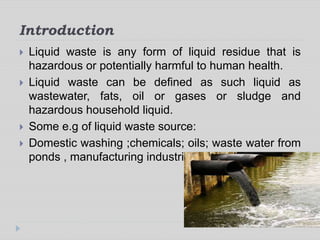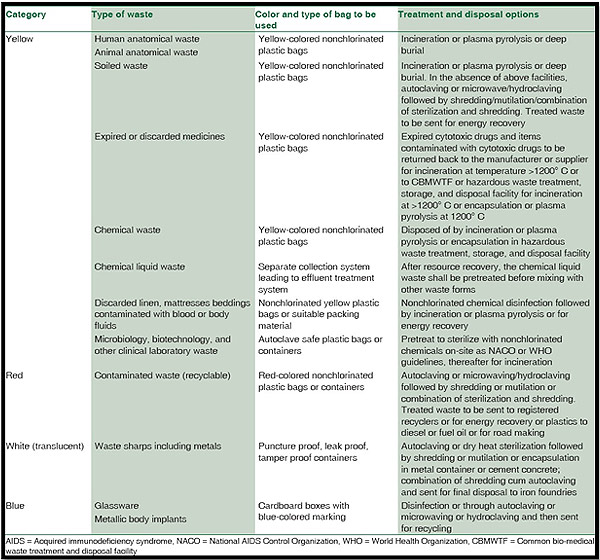Not known Incorrect Statements About Reclaim Waste
Table of ContentsGetting My Reclaim Waste To WorkSee This Report about Reclaim WasteSome Ideas on Reclaim Waste You Need To KnowAbout Reclaim Waste6 Easy Facts About Reclaim Waste Shown
Check out the types, occurrences, and forms of liquid waste. Residential sewage waste refers to the waste and items from a domestic septic system. This kind of waste is created by people in homes, colleges, and various other buildings. This only includes septic tanks that have a drainpipe area. The correct management and disposal of residential sewage waste need fluid waste to be transferred to a sewage treatment plant where the correct techniques and tools are put on purify and get rid of waste.
Business waste frequently includes potential risks, such as flammable materials or a combination of fluid and solid waste items, and needs an advanced and comprehensive disposal process. The disposal of business waste commonly includes the purification of waste before transportation to ensure secure and appropriate disposal. Industrial waste is developed from byproducts and overflow of commercial processes and manufacturing.
This sort of waste can not utilize the very same sewer management transportation or procedures as septic or commercial fluids. The hazardous waste management process requires the assessment and screening of fluid waste prior to it goes through the disposal procedure (liquid waste removal melbourne). Overflow waste is the liquid waste that originates from runoff and excess stormwater in very booming areas or cities
Overflow waste can cause contamination and flooding if not taken care of effectively. Guaranteeing correct waste administration can stop disasters and decrease environmental damage.
The 9-Second Trick For Reclaim Waste
Call PROS Solutions today to discover our waste management and disposal solutions and the correct ways to look after the liquid waste you produce.
(http://go.bubbl.us/e67627/7593?/Reclaim-Waste)This supposed 'wastewater' is not only an important source however, after treatment, will be launched to our land, rivers or the sea. Used water from bathrooms, showers, baths, kitchen sinks, washings and industrial processes is recognized as wastewater.

water utilized to cool machinery or clean plant and devices). Stormwater, a form of wastewater, is drainage that flows from farming and metropolitan areas such as roofs, parks, gardens, roads, courses and seamless gutters into stormwater drains, after rain. Stormwater streams without treatment straight to local creeks or rivers, eventually reaching the ocean.
The 8-Minute Rule for Reclaim Waste
In Queensland, many wastewater is treated at sewer treatment plants. Wastewater is delivered from domestic or commercial sites with a system of drains and pump stations, called sewerage reticulation, to a sewer treatment plant. Neighborhood federal governments construct, maintain and operate most sewer therapy plants. Operators are accredited under the Environmental Security Act 1994 to discharge cured wastewater at an appropriate environmental requirement right into rivers.
The Division of Natural Resources encourages neighborhood governments concerning managing, operating and keeping sewerage systems and treatment plants. In unsewered areas, local federal governments might need homeowners to mount specific or house sewer treatment systems to deal with residential wastewater from commodes, kitchens, washrooms and laundries. The Division of Natural Resources authorises making use of family systems when they are verified to be efficient.
In some new class, therapy of some stormwater to get rid of litter, sand and crushed rock has actually started making use of gross contaminant catches. Wastewater treatment takes place in 4 stages: Gets rid of strong matter.
Wastewater after that streams right into huge storage tanks where solids work out and are gotten rid of as sludge. Grease and scum are skimmed from the surface. Utilizes little living microorganisms called micro-organisms to break down and get rid of continuing to be dissolved wastes and great fragments. Micro-organisms and wastes are incorporated in the sludge. Gets rid of nitrogen and phosphorus nutrients that can create algal blossoms in our waterways and intimidate marine life.
Some Known Questions About Reclaim Waste.
Nutrient elimination is not available at all sewer therapy plants since it requires costly specialized devices. Clear liquid effluent generated after treatment might still contain disease-causing micro-organisms - liquid waste disposal melbourne.

Most wastewater moves into the sewage system. Under the Act, neighborhood federal governments administer approvals and permits for environmentally pertinent tasks (Ages) including wastewater releases that could have a neighborhood effect.
Our Reclaim Waste Diaries
Otherwise, samples are taken for lab evaluation. Often numerous examinations are needed to establish the degrees of each of the various pollutants such as oils, heavy metals and chemicals in water. check that Surveillance supplies valid details about water quality and can validate that permit problems are being fulfilled. The info gotten with monitoring supplies the basis for making water high quality decisions.